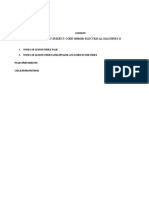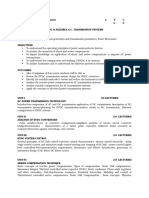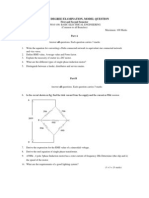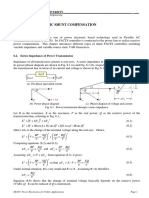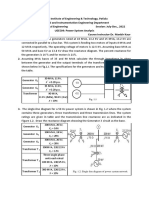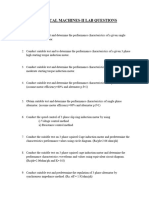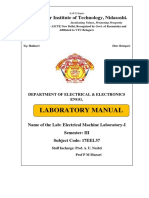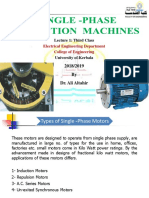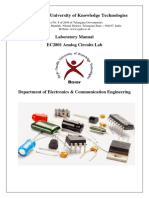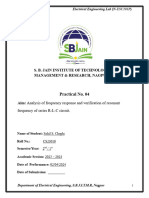0% found this document useful (0 votes)
345 views2 pagesRLC Circuit Resonance Study
This experiment aims to determine the frequency response of a series RLC circuit excited by a sinusoidal source and study resonance. The apparatus required includes a function generator, resistor, voltmeter, capacitor, breadboard, connecting wires, and decade inductance box. The parallel resonance frequency formula is given. At resonance, the inductive and capacitive reactances are equal in magnitude and cancel each other out since they are 180 degrees out of phase. Only one frequency allows this to occur. The total impedance becomes infinite at resonance, drawing no current from the AC source. The procedure involves connecting the circuit, varying the frequency from 50 Hz to 20 kHz, measuring the current through the resistor, repeating for different frequencies, and noting
Uploaded by
ramCopyright
© © All Rights Reserved
We take content rights seriously. If you suspect this is your content, claim it here.
Available Formats
Download as DOCX, PDF, TXT or read online on Scribd
0% found this document useful (0 votes)
345 views2 pagesRLC Circuit Resonance Study
This experiment aims to determine the frequency response of a series RLC circuit excited by a sinusoidal source and study resonance. The apparatus required includes a function generator, resistor, voltmeter, capacitor, breadboard, connecting wires, and decade inductance box. The parallel resonance frequency formula is given. At resonance, the inductive and capacitive reactances are equal in magnitude and cancel each other out since they are 180 degrees out of phase. Only one frequency allows this to occur. The total impedance becomes infinite at resonance, drawing no current from the AC source. The procedure involves connecting the circuit, varying the frequency from 50 Hz to 20 kHz, measuring the current through the resistor, repeating for different frequencies, and noting
Uploaded by
ramCopyright
© © All Rights Reserved
We take content rights seriously. If you suspect this is your content, claim it here.
Available Formats
Download as DOCX, PDF, TXT or read online on Scribd
/ 2





